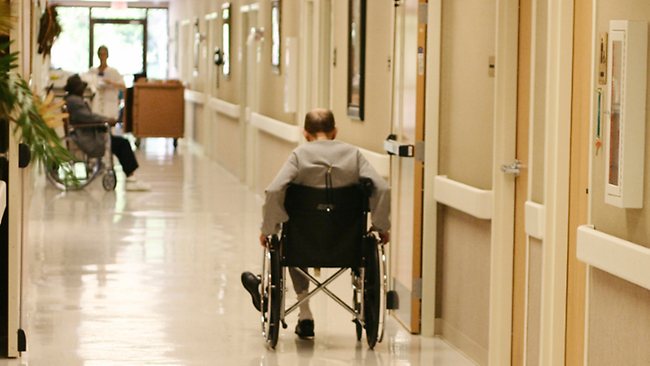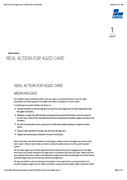
Australia’s population is ageing. Figures from the Bureau of Statistics show that in 1960, people aged 65 represented 8.5% of the population, and people aged 85 and over - 0.4%. In 2010, the proportion of the population aged 65 or more increased to 13%. The proportion of people aged 85 years and over increased more than four-fold to 1.8%. By 2050, 29% of Australians, or 6.1 million people, will be 65 or older.
For the first time, we will be living in a society where generations will be approximately the same size. This has huge implications for workplaces and health and aged care.
The Coalition
A Coalition government has promised to:
- Provide $935 million over four years for care for older Australians
- Implement the first ever four year Aged Care Provider Agreement with the aged care sector
- Provide $335 million over four years to convert up to 3,000 of the allocated bed licences to operational residential aged care beds in the first term;
- Provide convalescent care to assist up to 20,000 older people waiting in hospital to return home;
- Provide $200 million for research on dementia.
The ALP
In April 2012, the Labor government announced its ‘Living Longer, Living Better’ 10-year $3.7 billion strategy for reshaping aged care.
The plan includes ways to:
- make it easier for older Australians to stay at home while they receive care, by increasing the number of Home Care Packages from 59,876 to almost 100,000.
- Provide more choice about how to pay for care by making it possible for people to pay through a lump sum or a periodic payment, or a combination of both.
- Cap care costs at no more than $25,000 a year, and no more than $60,000 over a lifetime.
- Increase residential aged care places from 191,522 to 221,103
- Fund $1.2 billion to improve the aged care workforce
- Provide more funding for dementia care in aged care, and more support for services.
- Establish a single gateway to all aged care services, to make them easier to access and navigate.
It’s sometimes said that policy on ageing is like climate change without the excitement.
Currently, neither the Coalition nor Labor have a comprehensive plan for dealing with ageing. What we need:
1. Work a little longer.
This reduces numbers of pensions claimants and increases tax income.
Research suggests that involuntary early labour market exit and under-participation by older Australians is common. Often this is involuntary due to the nature of work that is available, age discrimination and an increase in casual or short-term employment in the labour market.
We need to make workplaces more flexible to include carers' leave for older people rather than simply concentrating on parental leave and care for children.
We also need to redesign workplaces to attract and retain skilled older workers.
2. Reduce housing costs.
Poverty among older people is a serious issue, and many who don’t own their own homes are caught in a damaging cycle where they can hardly afford a rental property and have run out of time to save for a mortgage.
This problem will get worse in the future as fewer people can afford to own their own homes and will have problems funding their retirement, especially if the Government expects to use Housing assets to fund aged care.
We need more social housing and different housing models such as housing associations that are suited to the needs of older communities.
3. Reduce aged care costs
The development of preventative health and self-care needs serious investment which would, in the longer term, reduce health care costs.
We also need to move to community-based care so people can stay in their own communities for as long as possible. This is what most people want and is far cheaper than residential care.
Money for dementia research is welcome, but it should be directed at ways to live with dementia most effectively, rather than searching for a single magical cure from medical research. Dementia is the single greatest cause of disability in Australians aged 65 years or older and the fourth leading cause of disability overall. We need to develop new and creative ways of living with dementia.
4. More and better-trained aged care workers
The most recent National Aged Care Workforce Census and Survey Report (2012) found that more than 240,000 workers are employed in direct care roles in the aged care sector, of which 147,000 work in residential facilities.
The Productivity Commission has estimated that the aged care workforce needs to more than quadruple by 2050 to meet future aged care needs. In the area of dementia care alone, Australia faces a shortage of more than 150,000 paid and unpaid carers by 2029.
The World Economic Forum has identified low numbers of trained professionals as a key problem. The issue is not just one of quantity, but of quality. We need better trained workers to deal with the complex needs of older people.
5. Re-design the built environment
We need to improve urban design of our homes, buildings, parks and open spaces to make them friendly for all ages. This will help prevent chronic diseases in the future, such as obesity and diabetes. It will also reduce social isolation, a major cause of depression in old age, increase social engagement and exchange between generations.




